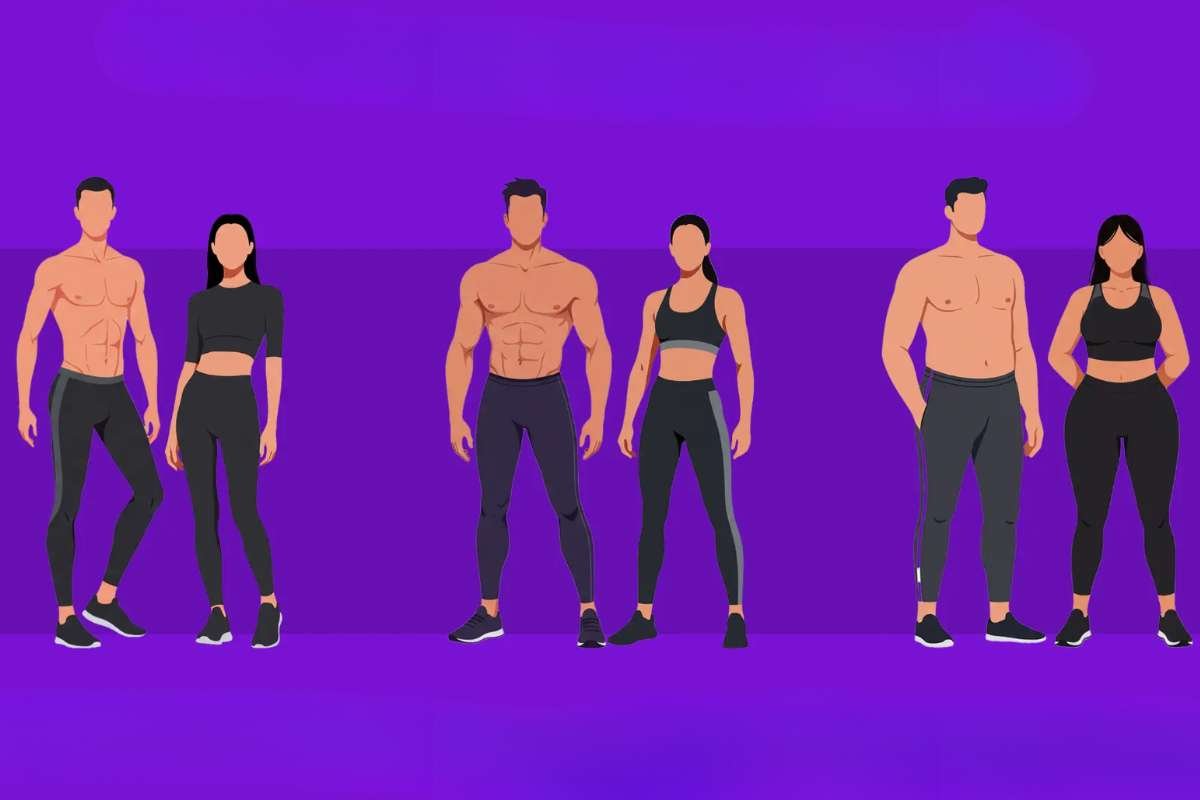When you think of an athlete, you probably picture muscular body shapes, quick foot movement, and plenty of energy. But athleticism isn’t one size fits all, as there are many shapes of athletic bodies. Although “fit” can imply one type of profile, “fit” may also imply different athletic body types, as there are many factors affecting each athletic body type’s composition, structure, strengths, and needs. Distinguishing between athletic body types can help an individual train with more insight, eat more effectively, and even choose exercise-related clothing with more confidence.
What Are Athletic Body Types?
Athletic body types typically refer to physiques that exhibit high levels of muscle tone, strength, and low body fat. However, within this broader classification, there are distinctions influenced by genetics, sport specialization, and training regimens. Most athletes fall into one of the following somatotypes:
- Mesomorph – This body type is naturally muscular, with broad shoulders, narrow waists, and a high metabolism. Mesomorphs gain muscle easily and often have a V-shaped torso. Many sprinters, football players, and gymnasts belong to this category.
- Ectomorph – Characterized by a slim, lean frame with long limbs, ectomorphs have trouble gaining both fat and muscle. Think of marathon runners and basketball players. Despite appearing less bulky, their strength-to-weight ratio can be remarkably high.
- Endomorph – Though typically associated with higher body fat, many power athletes and bodybuilders who fall into this category exhibit incredible strength. Endomorphs have wider hips and a more rounded physique, often excelling in sports that demand raw power like wrestling or weightlifting.
Understanding where you fall within these athletic body types isn’t about limitation—rather, it’s a way to unlock your potential by tailoring your approach to fitness, nutrition, and lifestyle.
How Athletic Body Types Impact Training?
Your body type significantly affects how you respond to different types of exercise. Here’s how training should be approached for each:

- Mesomorphs thrive on weight training and often see results quickly. However, they need to balance strength work with cardio to avoid excessive bulk and maintain flexibility.
- Ectomorphs benefit from resistance training with heavy weights and fewer reps. Their goal is usually to build muscle mass, so long recovery times and high-calorie diets are essential.
- Endomorphs should focus on a mix of high-intensity interval training (HIIT) and strength conditioning to promote fat loss while preserving muscle mass. Their diet needs to be closely monitored to manage insulin sensitivity and metabolism.
Recognizing your type among the athletic body types can prevent frustration in your fitness journey. Often, people train in ways that aren’t aligned with their body’s natural predispositions, leading to burnout or stagnation. Customizing your routine based on body structure enhances performance and encourages long-term sustainability.
Diet and Recovery: A Tailored Approach
Each body type not only responds differently to exercise but also to nutrition. For instance:
- Ectomorphs typically require a high-carb, high-protein diet to fuel their fast metabolism. Frequent meals and shakes can help meet caloric needs.
- Mesomorphs should maintain a balanced diet with moderate carbs, fats, and proteins. Due to their efficient metabolism, they can often handle occasional indulgences without gaining fat easily.
- Endomorphs benefit from a low-carb, high-protein diet, focusing on whole foods and fiber-rich vegetables. Meal timing and portion control are critical in managing fat levels.
Recovery is just as important. Mesomorphs may recover faster due to their adaptive muscles, whereas ectomorphs need more rest between strength sessions. Endomorphs should prioritize active recovery and mobility work to maintain flexibility and joint health.
Dressing for Athletic Body Types
While most articles on athletic body types focus on training and diet, fashion plays an underrated role in confidence. Each body type brings a different silhouette, and choosing the right clothing can enhance appearance dramatically:

- For mesomorphs, fitted clothing often works well, as their balanced proportions make for a naturally aesthetic look. Tailored blazers, V-neck tees, and slim-fit jeans complement their figure.
- Ectomorphs should consider layering and structured pieces that add dimension. Jackets with shoulder padding, horizontal stripes, and tapered trousers help create the illusion of bulk.
- Endomorphs can benefit from vertical lines and darker colors that elongate the frame. Avoid overly tight clothes that restrict movement and instead go for well-structured garments that contour without clinging.
Understanding how to dress for your specific physique not only improves style but also empowers confidence in both personal and professional settings.
Real-World Examples of Athletic Body Types
Look no further than the world of professional sports to see how diverse athletic physiques can be:
- Usain Bolt, with his ectomorphic build, dominates in sprinting due to his long strides and lean muscles.
- Simone Biles, a textbook mesomorph, showcases power, agility, and balance through her compact, muscular frame.
- Strongman competitors and some wrestlers with endomorphic builds leverage their mass and strength for explosive feats.
Each athlete optimizes their unique body structure to perform at the highest level. Their success is not about fitting into a mold, but about mastering their own.
Also read: 25 Inspiring Quotes from Female Athletes: Words of Wisdom to Empower and Motivate
Embracing Your Type

The key takeaway is this: fitness is not about transforming your body into a single “ideal” shape. Instead, it’s about understanding and embracing your own physiology. By doing so, you can make smarter decisions, whether it’s choosing the right training plan, eating the foods that nourish your body best, or simply picking out the perfect outfit.
All athletic body types can perform, inspire, and achieve excellence. It’s about aligning your effort with your body’s blueprint. Whether you’re a weekend warrior, a seasoned competitor, or someone just beginning their fitness journey, recognizing your type is the first step toward lifelong health and confidence.
Don’t miss: Yes, Women are on the List of Highest-Paid Female Athletes—Here’s the Proof
Conclusion
There is no singular formula for athleticism. Each of our bodies is unique, and anything that can be done physically can be found in some body type. After we learn to recognize the strengths and challenges that come with individual athletic body types, we can get beyond superficial ideas of fitness and pursue a more authentic, individualized, and empowering concept of health and performance.
Let your journey be driven by a real understanding of your body, and not unrealistic expectations. True change begins there.









